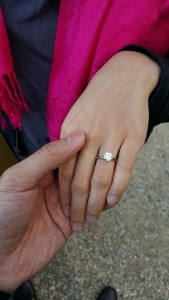Hi all,
I have been a long time reader of this forum and wanted to start off by thanking everyone for investing their time and sharing their knowledge in enriching this community.
I am posting this thread on behalf of my relative who is in search for an engagement ring for his girlfriend. This is the diamond he is considering: http://www.gia.edu/cs/Satellite?pagename=GST%2FDispatcher&childpagename=GIA%2FPage%2FReportCheck&c=Page&cid=1355954554547&reportno=7182595843
Its cut is only graded as "very good" while the other two are "excellent". The stone scores "excellent" (score 1.1) on HCA, indicating only a weakness in spread. Can I get the community's opinion on this stone? (PS, I know IF clarity is complete overkill and have surely related that to him).
Thank you in advance
I have been a long time reader of this forum and wanted to start off by thanking everyone for investing their time and sharing their knowledge in enriching this community.
I am posting this thread on behalf of my relative who is in search for an engagement ring for his girlfriend. This is the diamond he is considering: http://www.gia.edu/cs/Satellite?pagename=GST%2FDispatcher&childpagename=GIA%2FPage%2FReportCheck&c=Page&cid=1355954554547&reportno=7182595843
Its cut is only graded as "very good" while the other two are "excellent". The stone scores "excellent" (score 1.1) on HCA, indicating only a weakness in spread. Can I get the community's opinion on this stone? (PS, I know IF clarity is complete overkill and have surely related that to him).
Thank you in advance




300x240.png)